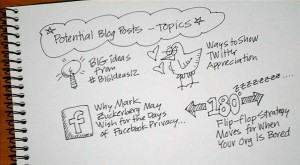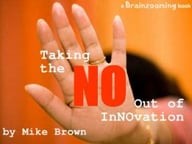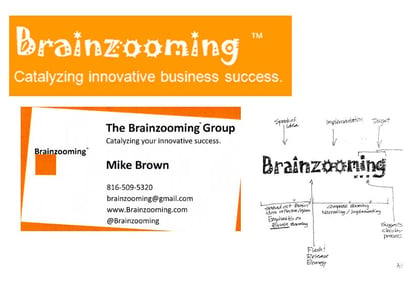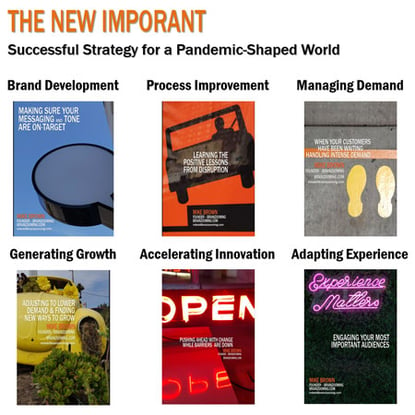I’ve been promising myself I’d write about incorporating visual thinking skills into work meetings since last summer when a client asked me for some ideas on visual thinking resources. He wanted to enhance his ability to facilitate meetings and capture meeting notes where he was a participant.
Visual Thinking Resources
My initial recommendation to him was checking out several books on visual thinking skills that have been helpful for me:
- One older book which helped shape my early thinking on diagrams is the "Marketer's Visual Tool Kit: Using Charts, Graphs, and Models for Strategic Planning and Problem Solving, " by Terry Richey.
- Another classic on the topic is “Information Anxiety” by Richard Saul Wurman (the guy who originally created the TED conference). It is not as tool and exercise-based, making it more of a "read it" than "use it" type of book for me.
- Finally, Edward Tufte is the guru of data visualization. If you ever get a chance to see him in person, it is very intriguing - a university professor who has a rock star feel to his presentations. Tufte's stuff is great and inspirational, but unless you are a designer, it feels tough to put it into practice on a daily basis.
A more recent visual thinking skills book that may have put the topic of visualization (back) on the map is "The Back of the Napkin - Solving Problems and Selling Ideas with Pictures," by Dan Roam. The issue for me with this book is that the original edition has really small type and really small diagrams, so it does not really help convey the message nearly as strongly as it should.
 Getting Over the "I Can't Draw" Visual Thinking Skills Hurdle
Getting Over the "I Can't Draw" Visual Thinking Skills Hurdle
When it comes to using drawing and visualization on the fly in meetings, people often become bogged down with drawing something in front of people out of concern it will not look right (or even look like anything). In reality, the ability to draw something is simply selecting and sketching shapes that SUGGEST what we want to depict.
We all understand and can re-create the shapes of letters. I have taken people who do not think they can draw and helped them see that they can "draw" simply by putting together a bunch of letters to create bigger, more complex shapes. Take letters, throw in a few geometric shapes, and realize all you are doing is trying to SUGGEST something (not create a photo-realistic depiction of it), and you've got a lot of what you need to visualize.
It’s All about Shapes
Shapes also come into play in note taking as a way to highlight certain types of information: ideas, conclusions, action items, etc. Some things might get stars beside them; others might always be written in circles. Grids can really help capture notes in an organized fashion as a meeting flows.
We also still use post-it notes in our strategy and creative thinking exercises because ideas on post-it notes can be re-arranged and grouped in new ways (i.e., put into shapes) to provide stronger understanding. Meeting notes tend to be captured chronologically, when notes really need to be presented afterward based on a logic flow, not a time flow.
The Missing Piece for Visual Thinking
What’s stopped this post from appearing before today was not getting the graphic drawn to put shapes and letters to common situations that present themselves in meetings. Then lo and behold, my Twitter friend and visual problem solving expert, Dean Meyers tweeted a link to this PowerPoint which does a really wonderful job of covering visual thinking skills. It has a valuable discussion on the necessary resolution for your drawings in addition to an approach for stronger visual thinking. And slide 28 contains the type of graphic I was planning on drawing relating shapes to objects.
“Yea” for waiting things out, and “yea” for people sharing great presentations on PowerPoint. - Mike Brown
Download the free ebook, “Taking the NO Out of InNOvation” to help you generate fantastic new ideas! For an organizational creativity boost, contact The Brainzooming Group to help your team be more successful by rapidly expanding strategic options and creating innovative plans to efficiently implement. Email us at info@brainzooming.com or call us at 816-509-5320 to learn how we can deliver these innovation benefits for you.




